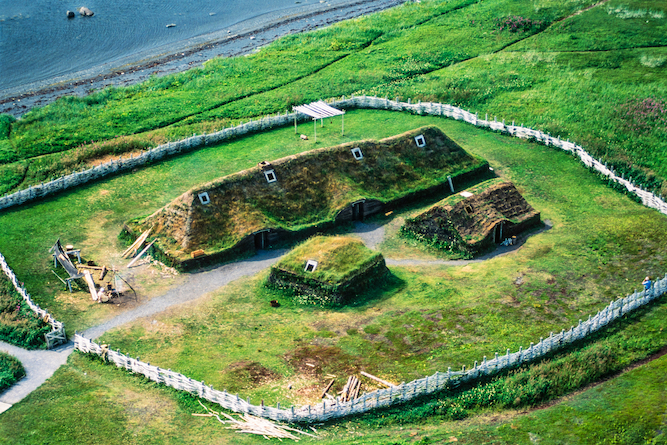Vikings were in North America by 1021 CE

Enlarge / Aerial image of L'Anse aux Meadows, Newfoundland, Canada. (credit: Glenn Nagel Photography)
Centuries before Christopher Columbus stumbled across the Bahamas, the Vikings established a beachhead at L’Anse Aux Meadows, a site on the northern peninsula of what is now Newfoundland, Canada. A recent study narrows down the date of the Norse arrival in North America to as early as 1021 CE, based on scraps of discarded wood from the site and with help from the aftermath of an ancient solar storm.
Vikings and cosmic rays
In the early 1200s, Icelandic authors wrote down two sagas describing Norse explorers’ trips to a place called Vinland. The expeditions had happened about two centuries earlier. Based on those sagas and the types of artifacts left behind at L’Anse aux Meadows, archaeologists today generally agree that the Norse arrived sometime near the end of the 1st millennium CE. For a few years (between three and 10), the Norse settlers used the site as a base for explorations farther south—and then they left.
Radiocarbon dating of charcoal from L’Anse aux Meadows suggests that the Viking Age came to American shores sometime between 975 and 1020 CE. To narrow down when the Norse arrived in Newfoundland, University of Groningen chronologists Michael Dee and Margot Kuitems, along with their colleagues, looked for evidence of the year a solar storm bombarded Earth’s atmosphere with radiation.
Read 15 remaining paragraphs | Comments
source https://arstechnica.com/?p=1805958